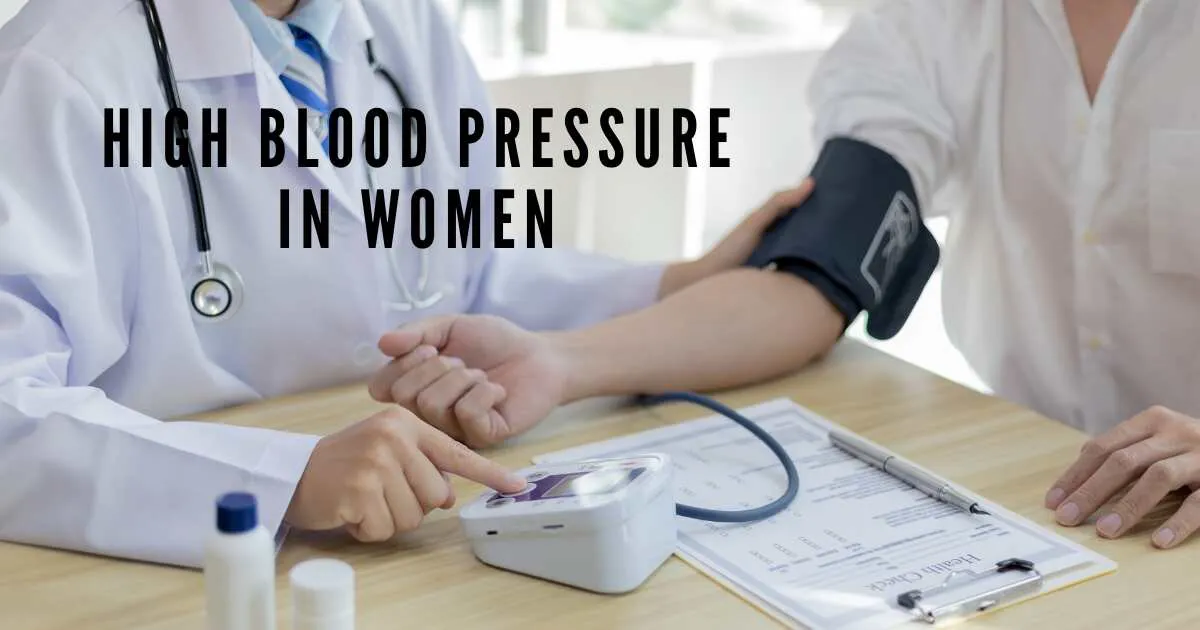Symptoms of high blood pressure
While high blood pressure is often asymptomatic, some individuals, particularly women, may experience certain signs indicating elevated blood pressure levels. These symptoms can include:
General Symptoms:
- Headaches: Persistent or throbbing headaches, especially in the morning, can be a sign of high blood pressure.
- Dizziness or lightheadedness: Feeling dizzy or lightheaded, especially when standing up quickly, may indicate elevated blood pressure.
- Shortness of Breath: Difficulty breathing or shortness of breath, even with minimal exertion, can be a symptom of hypertension.
Specific Symptoms in Women:
- Changes in Vision: Blurred vision or vision problems can occur due to hypertension, particularly in women.
- Chest Pain: While chest pain is often associated with heart attacks, it can also be a symptom of high blood pressure, especially in women.
- Fatigue: Persistent fatigue or weakness, despite adequate rest, could indicate underlying hypertension in women.
It’s important to note that these symptoms are not exclusive to high blood pressure and can be associated with various other health conditions. However, if experienced frequently or in conjunction with other risk factors, they warrant further investigation.
Risk Factors for High Blood Pressure in Women
Several factors increase the risk of developing high blood pressure in women. These include:
- Age: The risk of hypertension increases with age, particularly after menopause.
- Family History: A family history of high blood pressure or cardiovascular disease can predispose women to hypertension.
- Lifestyle Factors: Unhealthy lifestyle habits such as poor diet, lack of exercise, smoking, and excessive alcohol consumption can contribute to elevated blood pressure levels.
Complications of High Blood Pressure in Women
Untreated high blood pressure can lead to severe complications, especially in women. These complications may include:
- Heart Disease: High blood pressure is a major risk factor for heart disease, including heart attacks, heart failure, and coronary artery disease.
- Stroke: Hypertension increases the risk of stroke by damaging the blood vessels in the brain and increasing the likelihood of blood clots.
- Kidney Disease: Chronic hypertension can damage the kidneys over time, leading to kidney failure and the need for dialysis or transplantation.
Diagnosis
Diagnosing high blood pressure typically involves measuring blood pressure readings using a sphygmomanometer. Additionally, healthcare providers may recommend further tests to assess organ damage or determine the underlying causes of hypertension.
Treatment and Management
The treatment and management of high blood pressure often involve a combination of lifestyle modifications and medications. Lifestyle changes may include adopting a healthy diet, regular exercise, weight management, stress reduction techniques, and limiting alcohol and caffeine intake. In cases of moderate to severe hypertension, medications such as diuretics, beta-blockers, ACE inhibitors, or calcium channel blockers may be prescribed.
Prevention
Preventing high blood pressure in women involves adopting a healthy lifestyle and attending regular check-ups with healthcare providers. Engaging in regular physical activity, maintaining a balanced diet low in sodium and saturated fats, managing stress, and avoiding tobacco products can help prevent or delay the onset of hypertension.
Impact of Hormonal Changes
Hormonal changes, such as those occurring during menopause or pregnancy, can affect blood pressure levels in women. Estrogen plays a protective role in maintaining healthy blood vessels, so fluctuations in estrogen levels can impact blood pressure regulation. It’s essential for women to discuss any concerns about hormonal changes and blood pressure with their healthcare providers.
Support and resources
Support groups and educational materials can provide valuable resources for women living with high blood pressure. These resources offer guidance, encouragement, and practical tips for managing hypertension effectively.
Mental health and blood pressure
Stress and anxiety can lead to increased blood pressure levels. Learning stress management techniques, such as mindfulness meditation, deep breathing exercises, and yoga, can help women maintain healthy blood pressure and overall well-being.
Dietary Considerations
Following a heart-healthy diet rich in fruits, vegetables, whole grains, lean proteins, and healthy fats can support blood pressure management. Limiting sodium intake, avoiding processed foods, and monitoring portion sizes are essential components of a hypertension-friendly diet.
Exercise and physical activity
Regular physical activity is crucial for maintaining cardiovascular health and managing blood pressure. Engaging in aerobic exercises such as walking, swimming, cycling, or dancing for at least 150 minutes per week can lower blood pressure and improve overall fitness levels.
Medication Management
Taking prescribed medications as directed by healthcare providers is essential for regulating blood pressure and lowering the risk of complications. l


1 thought on “Recognizing the symptoms of high blood pressure”